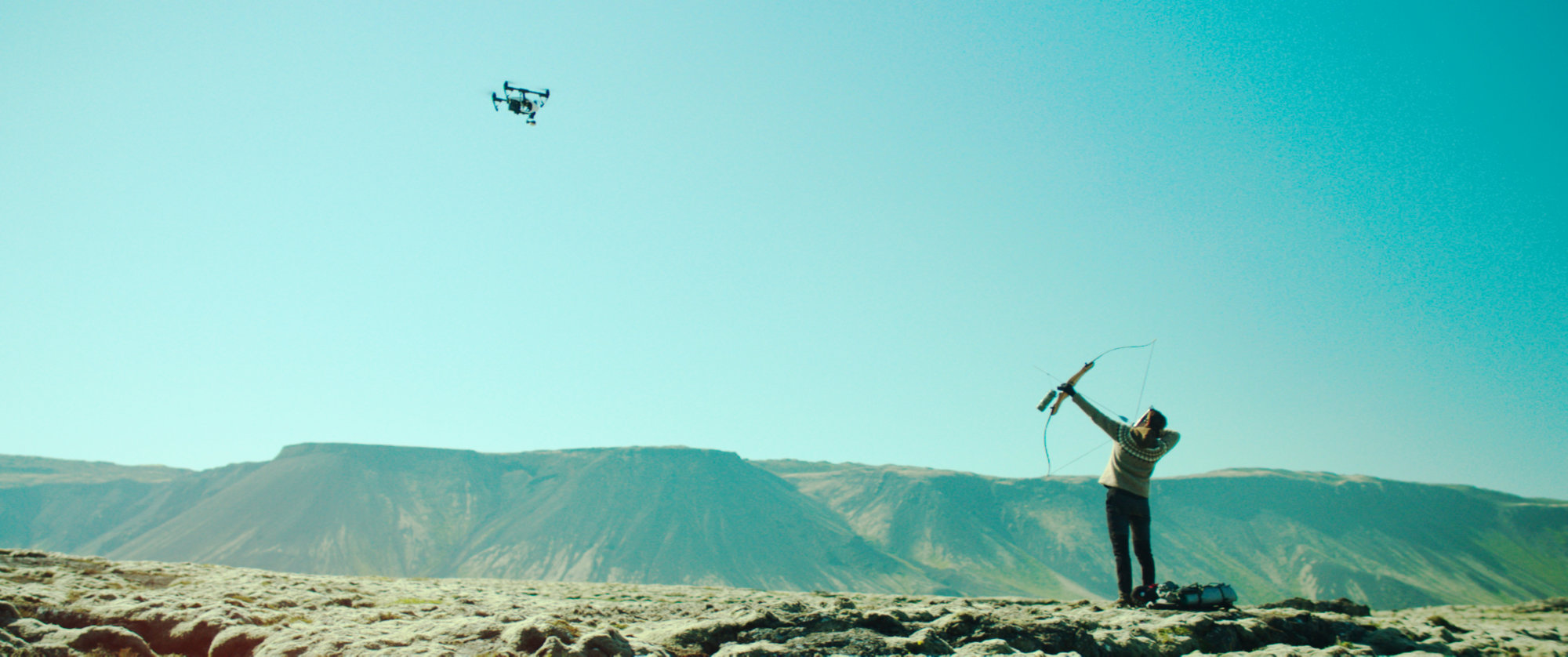Insurgents don’t generally wear lamb’s wool sweaters, do they? At least not on the job, right? Actually, I wouldn’t know. For all these eyes have seen directly, the standard insurgent costume could be mismatched plaid, water wings, and a rainbow wig. I’m not sure how that would get one’s POV across, but what do I know?
Despite my general lack of understanding, one thing is unambiguously clear to me: Halla (Halldóra Geirharðsdóttir) doesn’t want the local aluminum plant to get any more powerful. Unlike the modern weapons of resistance like marches, protests, and memes, Halla sez: “to Halla” with all that stuff. The middle-aged choir director takes a far more direct approach, running up mountains to sever or short circuit power lines. She knows this won’t curtail plant operations forever, but if she keeps it up, she can stop immediate foreign investment in the plant.
Before I miss my window, I can’t praise enough the acting of Halldóra Geirharðsdóttir. I have no better idea how to pronounce this Icelandic name than the one of that volcano that blew up in 2010: Eyjafjallajökull. Lemme tell ya, however, not only did Woman at War call upon its heroine to live double life as terrorist and mild-mannered music teacher, it also asked her to play the dual roles of she and her yoga instructing sister, Ása. As terrorist, we see her run up mountains, ford and dive into literally ice-cold rivers, duck into rock formations to hide from enemy helicopters, shoot down drones with bow-and-arrow, and drape herself in awful offal to hide from camera detection. Woman at War is among the most physically demanding roles I’ve seen in quite some time, and to give it some perspective, Demi Moore was 35 when she made G.I. Jane, ditto Linda Hamilton when she made Terminator 2. Halldóra Geirharðsdóttir is 50.
Oh, and did I mention? Halla is also going to be a first-time mother. The secondary plot of Woman at War involves a long-awaited adoption finally come through. A four-year-old war-torn Ukrainian girl is suddenly available and Halla is the next name on the list. Ukraine apparently doesn’t have a problem with Halla’s age or unmarried status. This, of course, yields the obvious question of how does a terrorist raise a small child? And, heck, the kid is Ukrainian; can she show mom a trick or two about resistance?
Woman at War is a dynamite study of feminism and the roles we accept v. the roles we choose. You want to tilt at windmills? Go ahead, but there’s a cost. It is also a very funny film on occasion, though you’d never guess it. One running gag involves a Spanish tourist who is constantly mistaken for the terrorist and subsequently arrested. Another involves two bands constantly in the background of Halla’s world, not unlike the roving musical duo in There’s Something About Mary, but imagine more invasive and interactive. The instrumented trio accents Halla’s life as insurgent, anticipating her actions and perils. The other group is three women singers in (I’m guessing) traditional Ukrainian costume; the a cappella accompaniment dictates the actions surrounding Halla’s adoption of Nika. This is very clever stuff.
On the very day I saw this film, a terrorist killed 50 people in Christchurch, New Zealand. The asshole who executed said agenda also had a manifesto and a justification for heinous acts. The question to me is: Can on observer condemn the one and praise the other? Are the acts in Woman at War laudable on some imaginary level because we know this is just fiction? Or because she’s a woman? Or because she only damaged property, not people? Or on some level is this kind of terrorism no different from any other kind of terrorism? I’ll say this much – while I was clearly rooting for Halla, I certainly identify the personal hypocrisy involved … and the movie understands this to an extent; it wants Halla to succeed because her cause is both bodycount free and, to some extent, noble, but it also forces her to realize what we saw in Act I: the path of rebellion leads directly away from the path of motherhood; you cannot walk both. Hence, I felt let down by a strangely upbeat conclusion; don’t let that stop you from enjoying this film.
While I’ve no wish to appear sycophantic
I find this Aunt Rebel romantic
Her daring aggression
Yields the question:
How do say “Rambo” in Icelandic?
Not Rated, 101 Minutes
Director: Benedikt Erlingsson
Writer: Ólafur Egilsson, Benedikt Erlingsson
Genre: Feminism, Iceland style
Type of being most likely to enjoy this film: Feminists
Type of being least likely to enjoy this film: Modern Republicans




